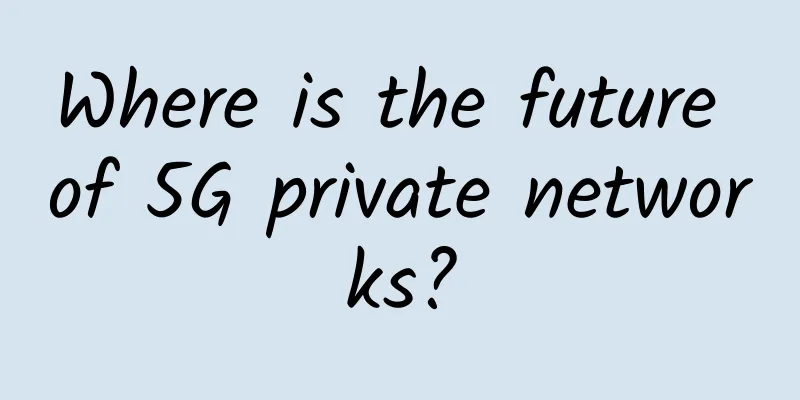Clarification: Top 10 5G Misconceptions

|
Misconception 1: 5G is a revolution that will replace 4G The initial 5G was deployed in NSA mode, which means relying on the existing 4G to expand network capacity and coverage. The initial 5G was very similar to 4G, and the network deployment mainly utilized the existing 4G base station resources. This was a smooth evolution from 4G to 5G. In fact, regardless of the NSA or SA deployment mode, 4G will continue to provide voice, data and IoT services for a long time and coexist with 5G networks. As for what we usually say about "5G changing society", it will take time for 5G to have a revolutionary impact on society. Misunderstanding 2: 5G requires large investments and is expensive From the perspective of single-site scale, 5G can greatly save investment costs by reusing old 4G base stations and supporting resources for co-location in the early stage. People usually think that "5G investment is large" because 5G requires the use of higher frequency bands and the construction of more small base stations, which leads to an increase in overall investment. However, this cannot be generalized. It depends on the specific deployment plan of the operator to make a specific analysis, which we will mention in the following chapters. As for the 5G tariff, it will definitely be cheaper than 4G, because the 5G spectrum efficiency has increased exponentially and the cost per BIT has decreased exponentially. Under the trend of fierce price wars, the tariffs will inevitably become cheaper and cheaper. At the same time, since 5G network slicing enables diversified application scenarios of mobile broadband and the Internet of Things, future 5G tariffs will never rely on a single traffic charge, but will be based on a diversified tariff standard of "experience first". There is no need to worry about the "one night, one suite" traffic policy at the beginning of 4G. Myth 3: 5G requires new frequency bands You can build 5G using new frequency bands, but no one prevents you from re-cultivating 2/3/4G frequency bands or using existing frequency bands to build 5G. In the R15 version, 5G NR defines multiple frequency bands ranging from sub 6GHz to millimeter wave, as shown in the following figure: Among them, some are new frequency bands introduced by 5G, and some are old frequency bands of LTE, so that 5G is not limited by spectrum resources and can be deployed in low, medium and high frequency bands. For example, China Mobile and Sprint in the United States are deploying 5G on 2.6GHz, using the original LTE frequency band n41; while T-Mobile in the United States plans to deploy 5G on 600MHz, using the original LTE frequency band n71. Misunderstanding 4: 5G is just a small base station Why does 5G need small base stations? Because higher frequency bands mean smaller wireless signal coverage, more base stations need to be built. However, since 5G is not limited by spectrum resources and can be deployed in low, medium and high frequency bands, it means that 5G has macro base stations and small base stations, but 5G cannot be equated with small base stations. Usually, when operators consider 5G full coverage, they will use low-frequency bands as the coverage layer, mid-frequency bands as the capacity layer, and millimeter-wave high-frequency bands as the high-capacity layer (hotspot). As can be seen in the above figure, the coverage layer is still macro base stations, and small/micro base stations are not deployed throughout the entire network. Operators are certainly not so stupid as to spend a lot of money to deploy so many small/micro base stations. Myth 5: 5G requires large channel bandwidth When 5G is mentioned, people think of "large bandwidth and high speed". However, 5G has a flexible physical layer design and supports channel bandwidth from 5MHz to 100MHz (400MHz in millimeter wave band). In other words, even if operators only have 5MHz frequency bandwidth, they can theoretically build 5G networks. For example, Dish in the United States plans to use narrow bandwidth to build NB-IoT networks, and then evolve to 5G IoT, focusing on IoT services. Let's do some theoretical calculations. The minimum channel bandwidth of 4G LTE is 1.4MHz, and the minimum channel bandwidth supported by 5G is 5MHz. If an operator only has 6.4MHz bandwidth, it is theoretically possible to build a 4G and 5G dual-connection network through non-independent networking (NSA). Myth 6: 5G requires Massive MIMO Massive MIMO can significantly improve spectrum efficiency, capacity and coverage, but it also has its own challenges. The main ones are: the antennas will be larger and heavier, the towers may not be able to bear the load, and power and backhaul upgrades are required. It is suitable for some sites, but it is not economical to deploy Massive MIMO on all sites. Usually, the low-frequency band coverage layer uses 4T4R, the mid-frequency band capacity layer uses 8T8R or 64T64R, and the millimeter wave high frequency band uses 128*128 or higher-order Massive MIMO. Myth 7: 5G network latency is less than 1 millisecond Sometimes, latency refers to the time required for a data packet to be received from the sender. In simple terms, it is half of the Ping delay, also known as one-way latency. Sometimes, latency refers to the round-trip time it takes for a packet to travel, which is the same as ping latency. In 3GPP and ITU, control plane delay and user plane delay are also defined. Control plane delay refers to the transition time from idle state to connected state; user plane delay refers to the one-way delay of IP layer data packet transmission. In different application scenarios, the latency requirements of 5G are also different. In the eMBB scenario, the 5G NR user plane latency (one-way) is 4ms; in the URLLC scenario, the 5G NR user plane latency (one-way) is 0.5 ms; and the control plane latency is 10ms. Low-latency 5G is just right for the wide range of 5G applications in the future. For example, VR/AR has a latency requirement of 7-12ms, and industrial robotic arms have a latency requirement of 1-10ms. Myth 8: 5G will replace Wi-Fi Over the past 20 years, cellular networks and Wi-Fi have been evolving from outdoor to indoor, and from indoor to outdoor respectively. The two complement each other and share the wireless traffic. As cellular networks evolve from 4G to 5G, Wi-Fi technology is also evolving at the same time. 5G high-frequency signals are more difficult to get into indoors, and indoor coverage is weak. Facing the growing video and IoT services, the world will still need Wi-Fi to supplement coverage and capacity. 5G is not to replace Wi-Fi, but the two will work together to expand the scale of the wireless ecosystem. Myth 9: 5G is necessary for autonomous driving Whether autonomous driving requires 5G depends on its level. Autonomous driving is divided into five levels (L1-L5), from "freeing your hands" to "freeing your eyes" and then to unmanned driving. If L1 to L4 autonomous driving can achieve local decision-making and control by collecting data through local cameras, radars, lidars and other sensors, when it comes to L5 unmanned driving, it is necessary to expand the perception range through network communication and make up for the lack of perception capabilities of local sensors in order to achieve 100% safe decision-making. Simply put, local sensing systems allow cars to “see all directions”, but autonomous driving also requires network communications to “hear all directions”. Misconception 10: 5G players are just operators and equipment manufacturers In the 4G mobile Internet era, the players in the industry chain were mainly operators, equipment manufacturers, mobile phone manufacturers and Internet companies. However, 5G defines three major application scenarios: eMBB (enhanced mobile broadband), URLLC (ultra-high reliability and ultra-low latency), and mMTC (massive machine type communications), which are aimed at the entire industry including automobiles, agriculture, manufacturing, health, and medical care. Therefore, we say "4G changes life, 5G changes society", and the entire industry needs to work together to promote the new future of 5G. |
<<: Have you ever thought about why TCP needs to handshake before sending data?
>>: Western Digital Enters In-Memory Computing Segment with New ULTRASTAR Memory SSD
Recommend
LOCVPS: 20% off on all VPS hosts, 30% off on German/Netherlands/US KVM for life
LOCVPS has launched a promotional activity for th...
Paving the way for 5G commercial use, the three major operators made major frequency adjustments
Recently, a piece of news circulated on the Inter...
Friendhosting 50% off promotion, VPS half-year payment starts from 7.5 euros
Friendhosting has launched a promotion for "...
Working together: Two ways Wi-Fi and 5G can coexist
WBA: Wi-Fi and 5G coexist at the physical layer o...
5G is coming: analyzing the fronthaul solution of high-density wireless systems
The LTE era of wireless communications has been f...
PacificRack: Windows VPS in Los Angeles Data Center starting at $12 per year
PacificRack has released several discounted VPS p...
Comprehensive diagram! Global operators' 5G deployment plan timeline
GSA's latest report shows that 154 mobile ope...
Network | Where is the United States in its race to seize the 5G market?
Experts have been hyping up 5G's gigabit spee...
Summary information: Cloudie.sh/Hongsuyun/Mondoze/Retslav/Crunchbits/Niuniu IDC
On weekend nights, I share with you some of the h...
Siemens Industrial Network Experts Plan to Build a Digital Industrial Ecosystem, 5G+TSN Will "Weave" a New Industrial Communication Network
[51CTO.com original article] On July 16, Siemens ...
Huawei releases next-generation CloudLink video conferencing solution
[Beijing, China, September 6, 2019] Huawei held a...
9 classic cases, online teaching how to troubleshoot network failures
Network failure is the most common and difficult ...
DiyVM: 50 yuan/month-2GB/50GB/5M/Hong Kong CN2 line
DiyVM is a brand of Hong Kong Ruiou International...
Power over Ethernet (PoE): A Sustainable Networking Solution for the 21st Century
Power over Ethernet (PoE) is a revolutionary tech...
5G is coming. China Mobile will incubate various vertical applications to realize the Internet of Everything
4G changes life, 5G changes society. At the 2016 ...









